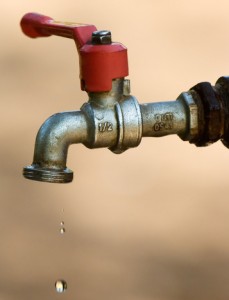 Word is getting around that the world is hurtling toward a future with dwindling water resources and the news is all gloom and doom. The number of lives threatened is staggering and the available solutions limited.
Word is getting around that the world is hurtling toward a future with dwindling water resources and the news is all gloom and doom. The number of lives threatened is staggering and the available solutions limited.
This state of affairs is nearly impossible to imagine for people who have only to turn a knob to receive a flood of cool, crisp and clean water. So, perhaps putting a name and a cultural face to the problem can help.
Note: There is a difference between a country that has little water but enough resources to buy all it needs, and an undeveloped country that has neither. Gulf nations like Bahrain, Qatar and Kuwait top the list in the ratio of available local resources per person, but these countries are capable of trading one precious liquid for another or financing desalination efforts.
Below we take a look at the five countries most threatened by severe water shortages that do not have the money to purchase it.
1. Libya
Libya’s troubles are twofold in that it is undergoing a period of political upheaval while also suffering from lack of water and other resources.
Libya’s local water resources have never been reliable, but the added stresses of regime change have acted to cut off water for much of the country’s population, including the capital of Tripoli. Violence and unrest typically rule news about Libya, but the broader fact is that the country goes through frequent and severe stretches without fuel, food and water.
2. Western Sahara
Often described as the “Disputed Territory of Western Sahara,” the colony is home to thousands of Sahrawi refugees who suffer constant food and water shortages due to a decades-long struggle for control between Morocco and the Sahrawi tribal group known as the Polisario Front.
The conflict is unlikely to end due to natural resources located in the area and the possibility of offshore oil, which means the people will continue to go thirsty.
3. Yemen
Yemen is a hotbed of conflict and a waypoint for terrorists traveling through the Middle East, and as such it is often in a weakened position to receive aid that includes fresh water.
The country has little natural fresh water to use and relies heavily on water from other sources. Political strife in the region often prevents the people from receiving many necessities and water is chief among them. Some experts project the county’s capital of Sanaa will be the first major city in the world to run out of water.
4. Djibouti
Eastern Africa has long been the target of humanitarian aid from familiar acronyms like UNICEF and UNHCR, and Djibouti’s legacy as a refugee corridor and strategic military position has always made it a stress point for adequate water supply.
An arid climate that is prone to drought and poor infrastructure does not help, and frequently leaves millions without reliable access to fresh water.
5. Jordan
Jordan is in the unfortunate position of being located in the arid and politically divided Middle East while lacking the access to valuable natural resources that its equally waterless neighbors enjoy.
This means that it must rely heavily on its own natural water resources, namely the Dead Sea and the Jordan River. Increased desertification and a growing population are acting together to decimate the water supply, and a plan for alternate sources has not been formulated.
Remember …
A water shortage is not only about a physical lack of water. If that were the case many parts of the U.S. would be in the same position as many of these countries. It is often more about economic resources, which is what makes it so important to understand that the global water crisis is a human problem rather than a series of isolated geographical inconveniences.
